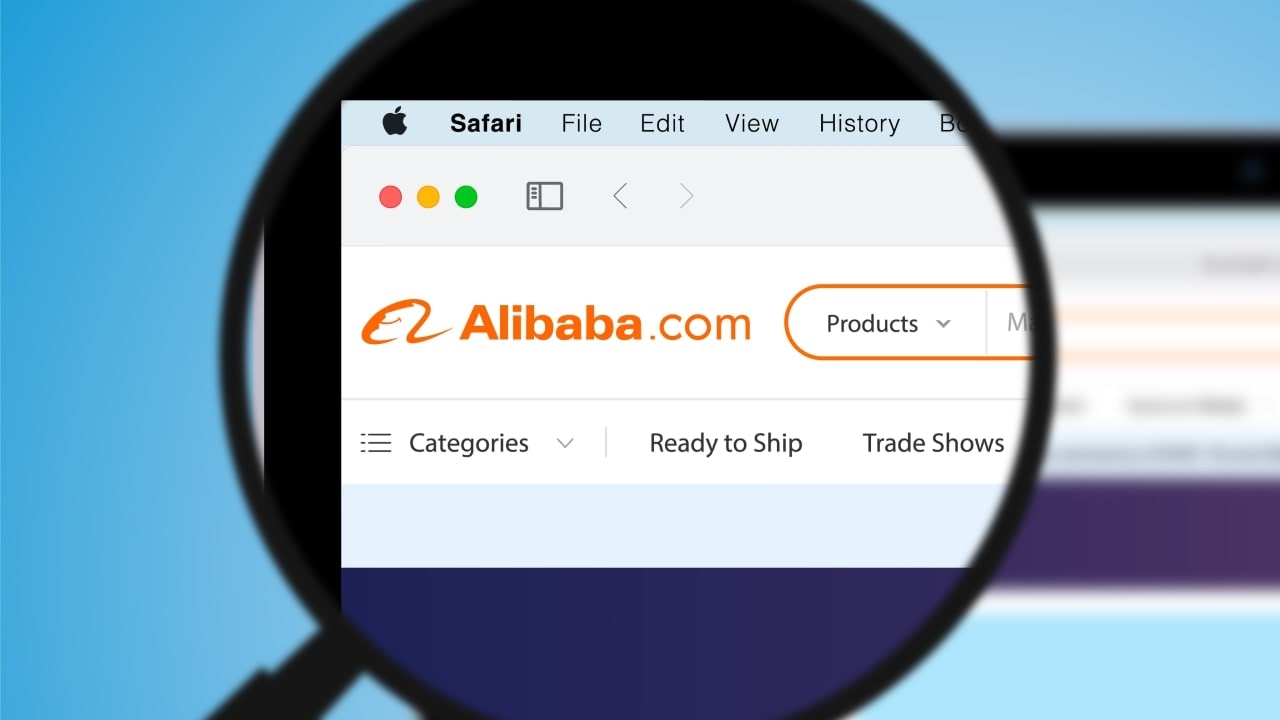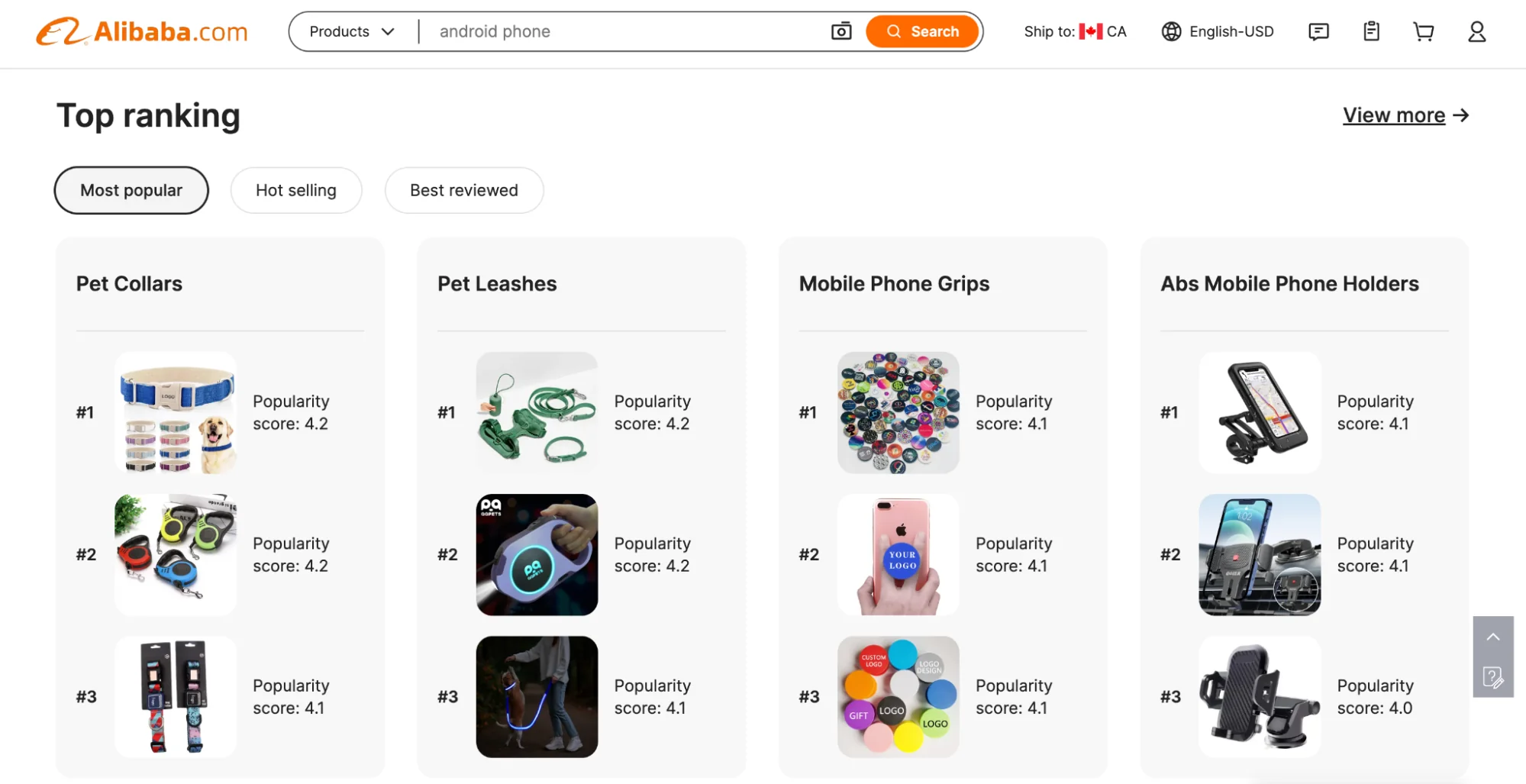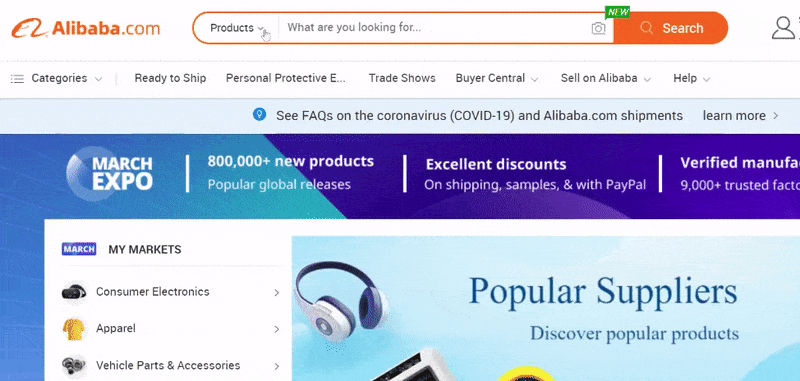AliBaba Dropshipping: The Complete 2025 Guide For Beginners
Contents

I thought using Alibaba meant buying in bulk and storing boxes in my bedroom.
Turns out, Alibaba dropshipping lets you skip all that — if you know where to look and what to ask.
In this guide, I’ll show you how to find the right suppliers, avoid beginner mistakes, and start selling — without touching a single product. It’s simple once you see how it works.
Let’s dive in.
Key Takeaways
- You can find dropshipping-friendly products directly on Alibaba by using smart filters like “MOQ: 1 Piece” and “Ready to Ship.”
- A good niche is lightweight, non-breakable, easy to ship, and has room for profit.
- Tools like Sell The Trend can help you discover trending products and connect with Alibaba suppliers faster.
- Always message suppliers before listing their products to confirm shipping times and single-order support.
- Avoid risky items like clothing, electronics, or anything that needs certification when just starting.
What is Alibaba Dropshipping?
Alibaba dropshipping is a way to sell products online without keeping any stock. You list items in your store, get orders from customers, and then ask a supplier on Alibaba to ship the product directly to them.
Alibaba is a website where factories and suppliers from China and other countries sell products in bulk. But some of them also accept single orders — that’s what makes dropshipping possible.
You don’t need to buy 100 pieces. You can ask the supplier to send just one item to your customer. But not every seller on Alibaba agrees to this. That’s why you have to message them first and check.
It takes a bit more work than other dropshipping methods, but the prices are lower, and you can even get custom branding if you grow your store.
Can You Dropship from Alibaba?
Yes, you can — but it’s not as simple as clicking “buy now.”
Alibaba is made for bulk orders. Most sellers expect you to buy 50, 100, or even 1,000 pieces at once. But some are open to dropshipping if you ask them directly.
The trick is knowing which suppliers allow it. You have to message them, explain that you want to sell their product one by one, and ask if they can ship to your customer.
Some will say no. Others will agree — especially if you sound serious and plan to bring more orders later.
Should I Do Alibaba Dropshipping?
If you’re willing to do a bit of extra work up front — like messaging suppliers, confirming shipping options, and handling orders manually — Alibaba dropshipping can be a great way to build a profitable store with higher margins and long-term potential.
But like any business model, it has both advantages and challenges. Here’s a quick breakdown to help you decide if it’s the right path for you:
Pros of Alibaba Dropshipping
- Lower product costs: Since you’re dealing directly with manufacturers, the prices are closer to factory rates. This gives you higher profit margins compared to AliExpress or retail-based platforms.
- Wide product selection: Alibaba has millions of products across every imaginable category — from gadgets to home decor, tools to pet accessories.
- Custom branding options: Many suppliers offer OEM (custom logo/packaging) even for small orders. You can start building a branded product line as your store grows.
- Flexible negotiations: You can negotiate pricing, packaging, shipping methods, or even bundle deals — something that’s rarely possible on traditional online marketplaces.
- Direct supplier relationships: You work one-on-one with suppliers. This opens doors to exclusive pricing, faster handling, or even private deals if you scale up.
Cons of Alibaba Dropshipping
- Not dropship-ready by default: Unlike dedicated dropshipping platforms, Alibaba isn’t built for it. Most suppliers expect bulk orders. You’ll need to manually message each one to confirm they’re open to fulfilling single customer orders.
- Longer shipping times: Since most products ship from China, delivery can take 2–4 weeks. This may not suit customers who expect fast shipping. You’ll need to manage expectations.
- Manual order processing: There’s no one-click order system. You’ll likely handle orders manually at first, which takes time — unless you use a fulfillment agent or a third-party tool.
- Risk of miscommunication: Language barriers or unclear listings can cause mistakes. You need to ask detailed questions before placing orders, especially regarding product quality, shipping, and returns.
- Variable supplier reliability: Some sellers are professional and responsive. Others may be slow, vague, or difficult to deal with. If a supplier fails, you risk delays, refunds, or unhappy customers.
Step-by-Step: How to Start Alibaba Dropshipping
Here’s a simple guide to help you begin, even if you’re a complete beginner.
1. Pick A Profitable Niche

First, you need to decide what you’re going to sell. This is called your niche. A niche is simply a specific type of product, like kitchen tools, pet accessories, beauty gadgets, or phone gear.
Picking the right niche is what separates stores that get sales from those that don’t.
Start with Alibaba Itself
Yes, you can start niche research directly on Alibaba. It’s not just for sourcing — it’s also a smart way to spot product trends.
- Go to Alibaba and search broad terms like:
- “home storage”, “travel gadgets”, “phone accessories”, “kitchen tools”
- Apply filters to focus your results:
- MOQ: 1 Piece – shows single-unit products
- Verified Supplier – safer and more responsive sellers
- Ready to Ship – shorter processing times
- Trade Assurance – for secure payments
Look for listings with high activity, “Hot Product” tags, and long order histories. You can also browse Alibaba’s “Industry Hubs” or “Selected Products” section to see what’s trending across different categories.
Cross-Check with Trend Tools
Next, confirm demand using tools like Sell The Trend, Amazon Best Sellers, or even TikTok Shop.
Sell The Trend is especially useful. It shows which products are taking off across different platforms and links directly to Alibaba suppliers.
Here’s how to use it:
- Sign up at sellthetrend.com
- Go to Trend Explorer or NEXUS Product Research
- Filter by category, price, or shipping country
- Look for products with high sales spikes and strong upward trends
- Use Store Insights to see who’s already selling it
- Click Supplier Links to find the product on Alibaba
This step helps you avoid guessing and find proven demand.
Once you spot a niche that checks all the boxes — popular, lightweight, easy to ship, and with room for profit — you’re ready to move forward. Here’s one example on Sell The Trend:

You’re not looking for “cool” products. You’re looking for things people already buy without much thinking.
When shortlisting ideas, test each product with these four rules:
- Is it lightweight? Cheaper and faster shipping.
- Is it non-breakable? Less chance of refunds or damage during delivery.
- Is it easy to ship? Smaller items are better — they fit in standard packaging.
- Is there a profit margin? Check the Alibaba price and see if you can at least double it when selling.
As a beginner, try to avoid products that are risky, like clothing (due to sizing issues), electronics (they break easily), or anything that requires special certification, like baby items or skincare. Stick to simple, low-risk products you’d feel comfortable buying online yourself.
The goal here isn’t to find the most unique product in the world. It’s to find something proven — something people want, that’s easy to deliver, and leaves enough room for profit. Once you’ve locked that down, you’re ready to move on to finding suppliers.
2. Set Up Your Online Store
Once you know what you want to sell, you need a place to sell it. That means creating your own online store — a website where people can browse your products, place orders, and pay you.
There are a few beginner-friendly platforms that work well with Alibaba dropshipping:
- Shopify – Very easy to use. No tech skills needed. It’s a paid platform (starts around $29/month) with all the tools built in.
- WooCommerce – Free if you already have a WordPress site. A bit more setup, but very flexible.
- SellShop – A great option if you want something quick and simple. It lets you launch a ready-to-use dropshipping store in minutes, and it connects well with product research tools like Sell The Trend.
If you’re just getting started, Shopify or SellShop is ideal. Both are beginner-friendly and don’t require coding or design experience.
3. Search for Dropship-Friendly Products on Alibaba

Once your store is ready, the next step is to find products on Alibaba that you can dropship. This part can feel tricky, because Alibaba is built for wholesale; most suppliers expect large orders. But many are open to dropshipping if you approach them the right way.
Start by searching for your product idea on Alibaba. Use clear keywords like “portable blender,” “phone stand,” or “kitchen storage box.” To find dropship-friendly options, try adding terms like:
- “No MOQ” (no minimum order quantity)
- “Dropshipping available”
- “Ready to ship”
These keywords help you spot suppliers who might be open to single orders.
Alibaba also offers advanced product filters that can save you a lot of time. After you search, use the left-hand sidebar to narrow down your options by selecting:
- Verified Supplier – These sellers have passed Alibaba’s background checks
- Trade Assurance – Offers payment protection and dispute support
- Ready to Ship – Products with faster handling and no longer manufacturing delays
- MOQ: 1 Piece – Shows products available for single-unit orders
- Ships From – Choose “China” or other countries based on where your customers live
Once you’ve applied these filters, scan the listings. Look for products that clearly state a minimum order quantity of 1 and show transparent pricing and shipping details. Some listings include estimated delivery times and available shipping methods like ePacket, YunExpress, or DHL. These are great for dropshipping.
4. List the Product in Your Store
Once you’ve found a dropship-friendly product on Alibaba and confirmed details with the supplier, it’s time to add that product to your store. This is where your customer sees what you’re offering, so make sure the page is clear, honest, and easy to understand.
Start by gathering everything you need from the supplier. Most will provide product photos, basic descriptions, pricing, and shipping info. You can use this as a base, but avoid copying it word-for-word — it often sounds too generic or poorly written.
Write your product description in simple, helpful language. Focus on what the product does, who it’s for, and why it’s useful. Keep sentences short and avoid complicated terms.
Good descriptions often include:
- What the product is (1–2 lines)
- Key features or benefits (in bullet points)
- Size, color, or material info
Here’s a great example:

Alibaba Dropshipping: FAQs
1. Is Alibaba Good For Dropshipping?
Yes, Alibaba can be a good fit for your dropshipping business—if you know how to use it right. Even though it’s a wholesale marketplace, many suppliers are open to sending single items directly to your customers.
You can use free tools to find products, compare prices, and study trends before you commit. Just make sure you ask the supplier about product quality and shipping times before you list anything.
2. How To Dropship On Shopify With Alibaba?
To start dropshipping on a Shopify store using Alibaba, follow a simple process. First, create your store and build a clear landing page that speaks to your target audience. Then go to Alibaba, search for your product, and add it to your import list.
Set a clear unit price, write a good product listing, and promote it using smart marketing strategies. When customer orders come in, you forward the details to the Alibaba supplier, who then ships directly to the potential customers.
3. What Are The Risks Of Alibaba?
There are some risks. If a supplier fails to deliver or sends low-quality products, your business takes the hit. That’s why it’s smart to order samples first and compare them with other suppliers.
Also, prices on Alibaba are usually listed as wholesale prices, but some can be negotiated for better deals.
Always review the search results carefully and look for Alibaba offers with good reviews, clear shipping terms, and product guarantees. This reduces the chance of getting stuck with poor service or delays.
4. Can I Sell On Alibaba For Free?
No, you can’t list your products on Alibaba for free. Unlike an online marketplace like Etsy or Amazon, Alibaba is mainly for retailers and B2B sellers, and they charge for listing and membership.
If you’re looking to run an online business and sell products to others, it’s better to use Alibaba as a supplier rather than trying to sell there directly. Use it to buy low and sell high through your e-commerce setup.
5. Is It Safe To Buy From Alibaba In The US?
Yes, it’s generally safe to buy from Alibaba in the US, especially if you use their secure payment system and stick to verified suppliers. Many people use it to power their e-commerce business. But always do your homework.
Read reviews, communicate clearly, and never assume the seller knows exactly what you want. Treat it like a business deal, not just a casual order. With the right checks in place, buying from Alibaba can help you access competitive prices and grow your brand without managing inventory.
Conclusion
Alibaba works well for the dropshipping model when used smartly. This comprehensive guide showed how to find products, connect with manufacturers, and sell with confidence.
It also gives dropshippers the chance to customize items and work directly with buyers. If you’re serious about ecommerce, treat it like a real company, not just a quick gig.
Always invest carefully, and purchase samples before selling. With time and effort, Alibaba can help you build a solid business.








